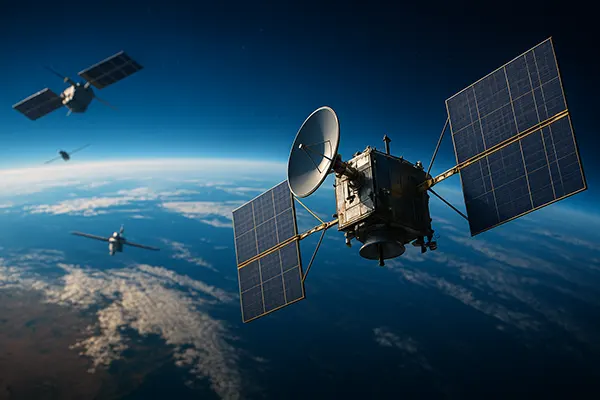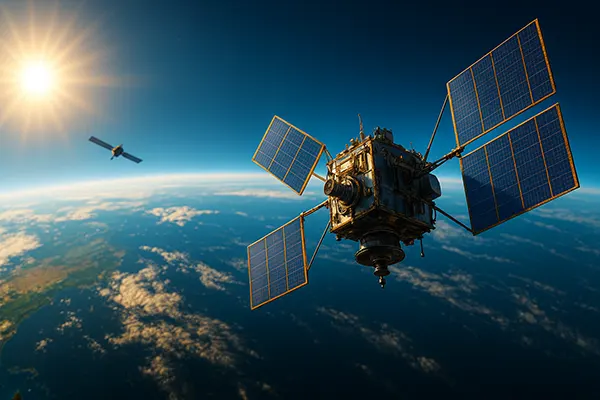Starlink vs OneWeb vs Amazon Kuiper: The Battle for Satellite Internet in Europe

The race for global satellite internet dominance is intensifying, especially in Europe where three of the world’s largest players—Starlink, OneWeb, and Amazon’s Project Kuiper—are investing heavily in orbital infrastructure. Each competitor brings its unique vision and capabilities, aiming to offer high-speed connectivity to even the most remote parts of the continent. But how do these systems compare in practice?
Deployment Progress and Satellite Constellations
As of mid-2025, SpaceX’s Starlink has deployed over 6,200 low Earth orbit (LEO) satellites, making it the leader in terms of volume and operational coverage. Starlink offers service in nearly all European countries, including rural and mountainous areas. The company continues to expand its second-generation constellation, which supports higher speeds and lower latency.
OneWeb, now under a joint venture led by Eutelsat, has completed its Phase 1 constellation with 648 LEO satellites. Unlike Starlink’s global consumer focus, OneWeb targets enterprise and governmental clients, offering backhaul for mobile networks and corporate data links. It is now working on its second-generation network with enhanced throughput.
Amazon’s Kuiper, while the latest entrant, launched its first batch of test satellites in late 2024 and began initial service demos in Q2 2025. With plans to deploy 3,236 satellites, Kuiper is currently focused on regulatory approvals and ground station development across the EU. Amazon targets a mid-2026 commercial rollout.
Orbital Strategies and Technological Differences
Starlink operates primarily in LEO at around 550 km altitude, enabling low-latency connections below 30 milliseconds. Its phased-array user terminals are compact and increasingly affordable, making them ideal for personal and mobile use. Starlink also benefits from vertical integration and regular Falcon 9 launches.
OneWeb uses a higher LEO orbit (around 1,200 km), which slightly increases latency but allows broader geographic coverage with fewer satellites. Its terminals are bulkier but tailored for professional use. The network partners with local telecom operators to provide last-mile services, maintaining a hybrid approach.
Amazon Kuiper’s constellation will orbit between 590 km and 630 km. Its technology stack is similar to Starlink, including phased-array antennas and beam-forming techniques. However, Amazon aims to integrate Kuiper tightly into its cloud infrastructure (AWS), potentially offering bundled services and edge computing for business customers.
Market Access, Licensing, and Regulatory Hurdles
Europe presents a complex regulatory landscape for satellite internet providers, involving both EU-wide and national-level permissions. Starlink faced delays in France and Germany due to local concerns over frequency interference and environmental impact but has now resolved most issues and operates under CE-mark compliance.
OneWeb enjoys a smoother regulatory pathway, in part due to Eutelsat’s European footprint and its compliance with EU Digital Services and Cybersecurity regulations. It is authorised for service in the majority of EU member states and continues to collaborate with the European Space Agency on policy frameworks.
Amazon Kuiper, still in its early phase, is awaiting licensing in key markets including Germany, France, and the Netherlands. The European Commission is evaluating its spectrum usage and data localisation practices. Kuiper must navigate GDPR compliance and spectrum coordination with incumbent satellite operators before full launch.
Affordability and Target User Segments
Starlink’s subscription in Europe starts from €65–€95 per month depending on country and package. The one-time hardware cost is currently around €320. Its individual-centric model appeals to remote workers, off-grid homeowners, and mobile users such as yachts and campers.
OneWeb does not directly offer services to individuals. Instead, it forms partnerships with ISPs and governments to deliver satellite broadband to schools, hospitals, and underserved regions. Pricing is negotiated per project, focusing on reliability over affordability.
Amazon Kuiper is expected to offer consumer packages starting at competitive rates, potentially subsidised through bundling with Prime or AWS services. While exact pricing is still unconfirmed, internal documents suggest a plan to undercut Starlink’s hardware costs by at least 20% through mass production and logistical optimisation.

Future Plans and Technological Roadmaps
Starlink continues to innovate, with plans for direct-to-smartphone service (in collaboration with T-Mobile) expected to launch in 2026. Additionally, the introduction of Starlink V3 satellites with laser interlinks will further reduce dependency on ground stations, improving resilience and coverage.
OneWeb’s second-generation constellation, expected to begin deployment in 2026, will feature smaller, more agile satellites and greater integration with 5G backhaul. The company is also exploring secure government-only communication channels in cooperation with NATO partners.
Amazon Kuiper’s roadmap includes integrating AI-driven traffic management and AWS-based security layers. The project is expected to benefit from Amazon’s logistics and data processing strength, potentially becoming a key player not just in broadband, but in IoT and enterprise cloud networking across Europe.
Geopolitical and Environmental Considerations
Satellite internet is increasingly tied to geopolitical strategy. Starlink has been active in supporting Ukraine with emergency connectivity and is being considered as a resilient communication tool for NATO exercises. This raises questions of neutrality and dependency on U.S.-based infrastructure.
OneWeb promotes itself as a more politically neutral option, especially with its ties to European institutions. However, its partial ownership by India’s Bharti Group introduces its own set of strategic interests. Environmental lobbying groups have praised OneWeb’s de-orbiting practices and sustainability commitments.
Kuiper, while not yet politicised, could become a point of contention if data localisation and EU sovereignty concerns are not addressed. The European Commission is monitoring the situation closely, especially given Amazon’s influence on cloud infrastructure and AI development.
